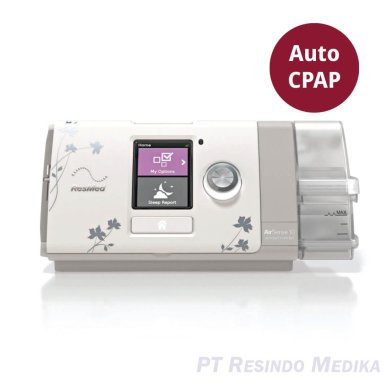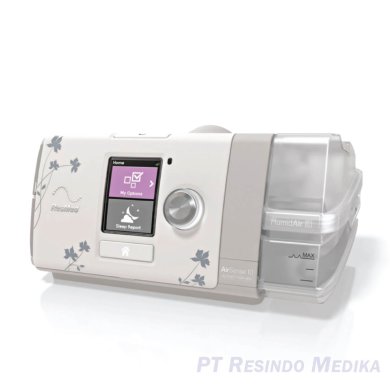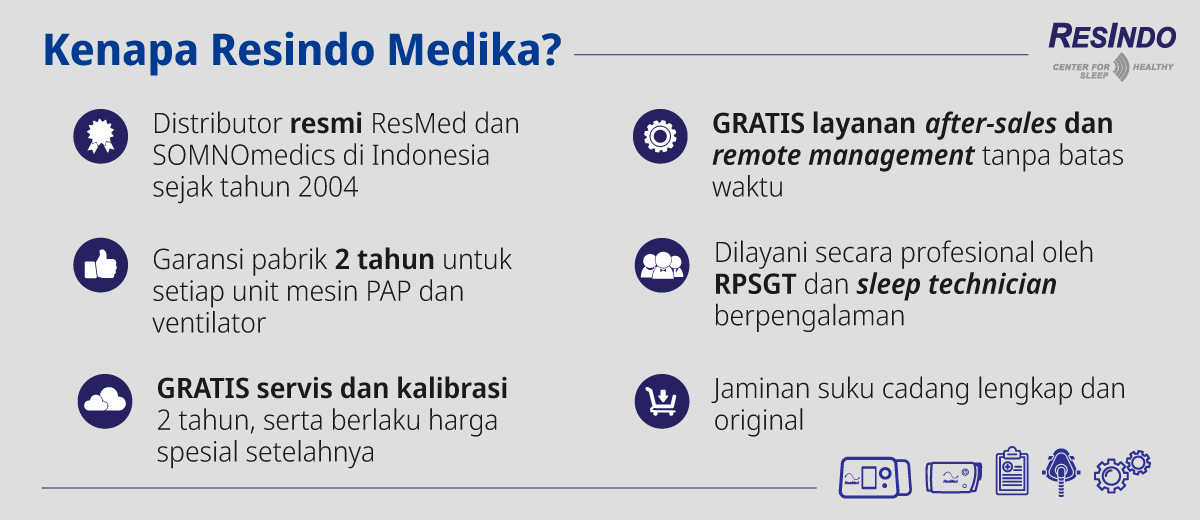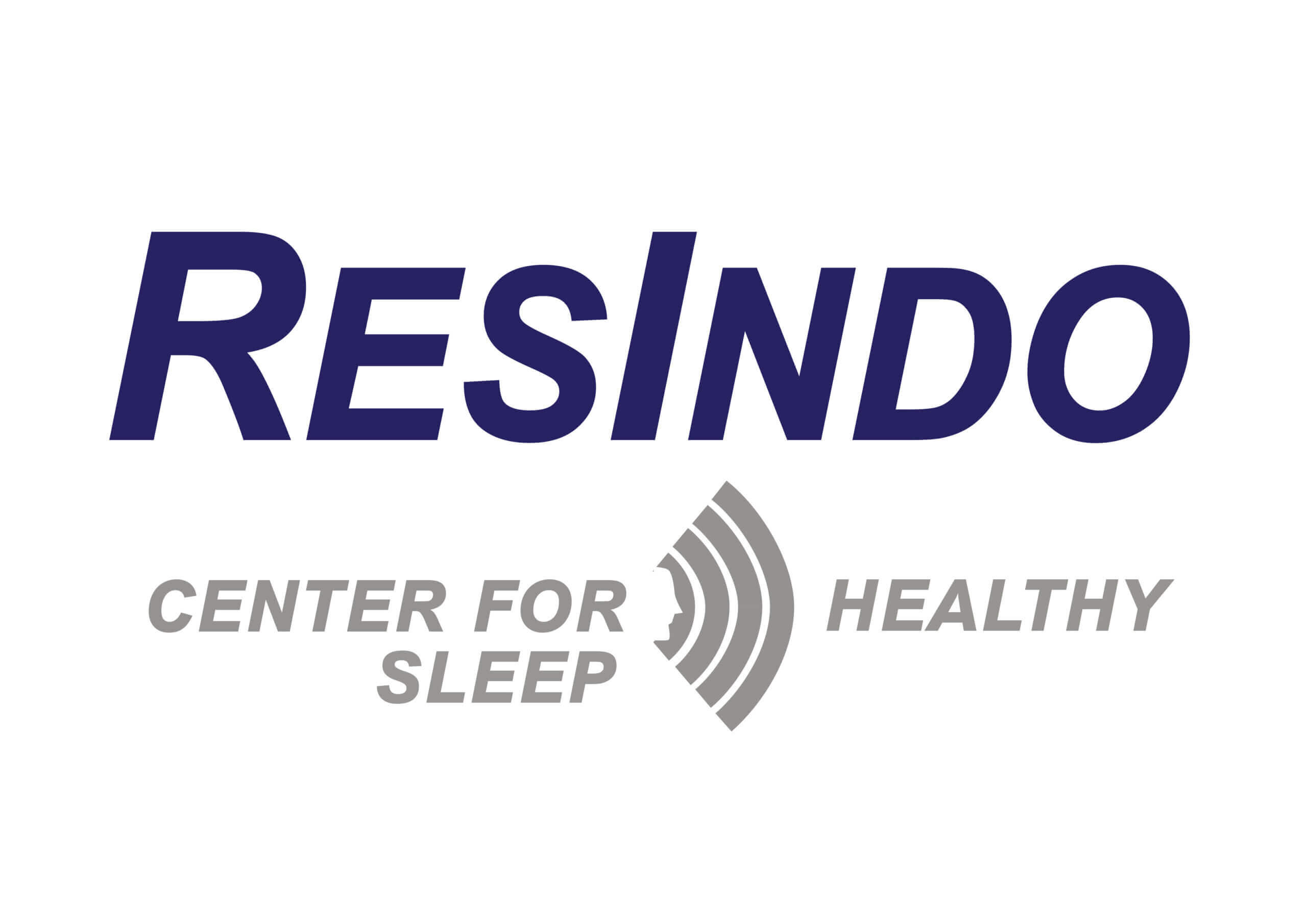


AirSense 10 Autoset For Her Automatic CPAP adalah mesin terapi sleep apnea yang dilengkapi dengan algoritma Autoset For Her esklusif dari ResMed. Algoritma ini dirancang secara khusus untuk menjawab kebutuhan pasien sleep apnea wanita. Algoritma Autoset For Her lebih sensitif terhadap penyempitan saluran pernapasan yang umum terjadi pada pasien sleep apnea wanita. Dengan deteksi awal yang akurat, mesin dapat merespons dan memberikan treatment yang lebih spesifik untuk meningkatkan keberhasilan terapi. Selain itu, AirSense 10 Autoset For Her Automatic CPAP juga dilengkapi dengan koneksi wireless dan fitur premium yang lengkap untuk memberikan pengalaman terapi terbaik yang nyaman dan efektif.
● Algoritma Autoset For Her
Pasien sleep apnea wanita cenderung lebih sering mengalami penyempitan napas dibanding pasien laki-laki. Karena itu, Algoritma Autoset For Her dirancang lebih sensitif terhadap penyempitan napas dan memiliki dorongan tekanan udara yang lebih lembut. Ketika penyempitan napas terdeteksi, mesin akan merespon dengan memberikan tekanan lembut yang efektif membuka kembali jalan napas tanpa mengusik pasien wanita yang peka dan mudah terbangun.
● Mode Terapi Lengkap
AirSense 10 Autoset For Her Automatic CPAP memiliki 3 mode terapi, CPAP, Autoset, dan Autoset For Her. Sehingga tidak hanya untuk wanita, AirSense 10 Autoset For Her Automatic CPAP juga dapat difungsikan untuk terapi CPAP secara umum. Mode Autoset akan mengubah pengaturan dan algoritma mesin menjadi sama dengan AirSense 10 Autoset Automatic CPAP berwarna hitam. Mode terapi yang lengkap memberikan keleluasaan lebih bagi pengguna untuk memilih pengaturan yang tepat dan sesuai kebutuhan.
● Koneksi Wireless AirView
AirSense 10 Autoset For Her Automatic CPAP didukung oleh koneksi wireless dan could-based program AirView yang memudahkan remote monitoring dan remote setting tanpa perlu bertemu secara langsung dengan care provider. Fitur ini memberikan efisiensi waktu lebih baik, pengguna cukup menghubungi care provider untuk mendapatkan bantuan remote setting via AirView dan pengaturan mesin akan otomatis berubah selama mesin berada dalam wilayah regional.
● Humidfier Terintegrasi
AirSense 10 Autoset For Her Automatic CPAP dilengkapi dengan humidfier terintegrasi yang memanfaatkan uap air untuk melembapkan udara. Pasien wanita memiliki tenggorokan dan hidung yang lebih sensitif dan mudah kering apabila terpapar tekanan udara terus menerus sepanjang malam. Sinergi humidfier terintegrasi dengan fitur Climate Control dapat menjaga temperatur serta kelembapan udara tetap konsisten agar saluran pernapasan tidak kering dan perih selama menggunakan alat terapi CPAP.
● Fitur Premium Lengkap
AirSense 10 Autoset For Her Automatic CPAP juga dilengkapi dengan fitur premium lengkap seperti Climate Control, Auto-Ramp, Mask Fit dan Smart Start yang berguna untuk mendukung terapi yang nyaman dan efektif.
| Mode Terapi | CPAP, Autoset |
| Konektivitas | Wireless 4G |
| Konsumsi Daya | 90W (220-240 V) |
| Variasi Tekanan | 4-20 cm H2O |
| Humidfier | Ya, Terintegrasi |
| Filter | Ya, Standart |
| Ramp Time | Auto, 0 – 45 menit |
| Climate Control | Ya (aktif dengan ClimateLine Air Tubing) |
| Smart Start | Ya |
| Mask Fit | Ya |
| Media Penyimpanan | SD Card |
| Level Suara | 26,6 dBA |
| Penggunaan Pesawat | Memenuhi standart Federal Aviation Administration (FAA) |
| Berat | 1,25 kg (dengan Humidfier) |
| Dimensi (P x L x T) | 25,5 x 11,6 x 15 cm (dengan Humidfier) |
| Garansi | 2 tahun |
| Kompatibilitas Masker | AirFit F20 Mask, AirFit F20 For Her Mask, AirFit N20 Mask, AirFit N20 Classic Mask, AirFit P10 Mask, AirFit N30i Mask, AirFit P30i Mask |
| Kompatibilitas Selang | ClimateLine Air Tubing, SlimLine Tubing |
| Jadwal Perawatan dan Penggantian Suku Cadang | ● Filter Udara : Ganti setiap 1-3 bulan sekali (filter tidak dapat dicuci) ● ClimateLine Air : Cuci setiap 1-2 hari. Ganti setelah 3 bulan ● HumidAir Cleanable : Cuci setiap 1-2 hari. Ganti setelah 6 bulan ● Cushion Masker : Cuci setiap hari. Ganti setelah 6 bulan ● Frame Masker : Cuci setiap 2 hari sekali. Ganti setelah 3 bulan ● Headgear Masker : Cuci setiap 2 hari sekali. Ganti setelah 8 bulan ● Mesin : Servis dan Kalibrasi rutin setiap 1 tahun sekali |
| Kelengkapan Paket | 1 unit AirSense 10 Autoset Automatic CPAP 1 unit HumidAir Cleanable 1 unit ClimateLine Air 1 set Adaptor 90W 1 buah Travel Bag AirSense 10 Autoset 1 set Masker CPAP (dapat dipilih sesuai kompatibilitas masker) |
Pusat Dokumen
Video Produk
Panduan Pengaturan dan Penggunaan AirSense 10 Autoset
Panduan Penggunaan Humidfier AirSense 10 Autoset
Algoritma Autoset For Her ResMed
Pertanyaan yang Sering Diajukan
Selain warna dan desain yang lebih feminin, AirSense 10 Autoset For Her Automatic CPAP dilengkapi dengan algoritma Autoset For Her yang tidak terdapat pada alat terapi CPAP AirSense 10 Autoset Automatic CPAP.
Ya, AirSense 10 Autoset For Her Automatic CPAP tidak memiliki larangan untuk penggunaan pada laki-laki. Pada beberapa kasus, pasien laki-laki dapat memiliki gejala sleep apnea yang membutuhkan tekanan lembut dan disarankan untuk menggunakan AirSense 10 Autoset For Her Automatic CPAP.
Label ‘For Her’ merujuk pada spesifikasi produk yang cocok dengan karakteristik sleep apnea pada wanita, namun pada dasarnya tidak ada pemisahan gender dalam penggunaan alat terapi CPAP.
Tidak harus, apabila hasil observasi dokter menunjukkan bahwa pasien sleep apnea wanita memerlukan tekanan yang lebih besar kemungkinan pasien akan direkomendasikan untuk menggunakan AirSense 10 Autoset Automatic CPAP berwarna hitam.
Akan tetapi, AirSense 10 Autoset For Her Automatic CPAP juga memiliki algoritma Autoset yang dapat diaktifkan lewat pengaturan mode. Sehingga, AirSense 10 Autoset For Her Automatic CPAP merupakan investasi yang baik dan menguntungkan bagi pasien sleep apnea wanita. Apapun hasil rekomendasi dokter, mereka dapat beralih mode dan menikmati manfaat semua algoritma Autoset ResMed dengan bebas.
Tidak, AirSense 10 Autoset For Her Automatic CPAP kompatibel dengan semua masker ResMed AirFit Series. Anda dapat memilih masker sesuai preferensi, bentuk wajah, kebutuhan dan kebiasaan tidur. Hubungi tim Resindo Medika untuk mendapatkan rekomendasi masker yang tepat untuk Anda.

